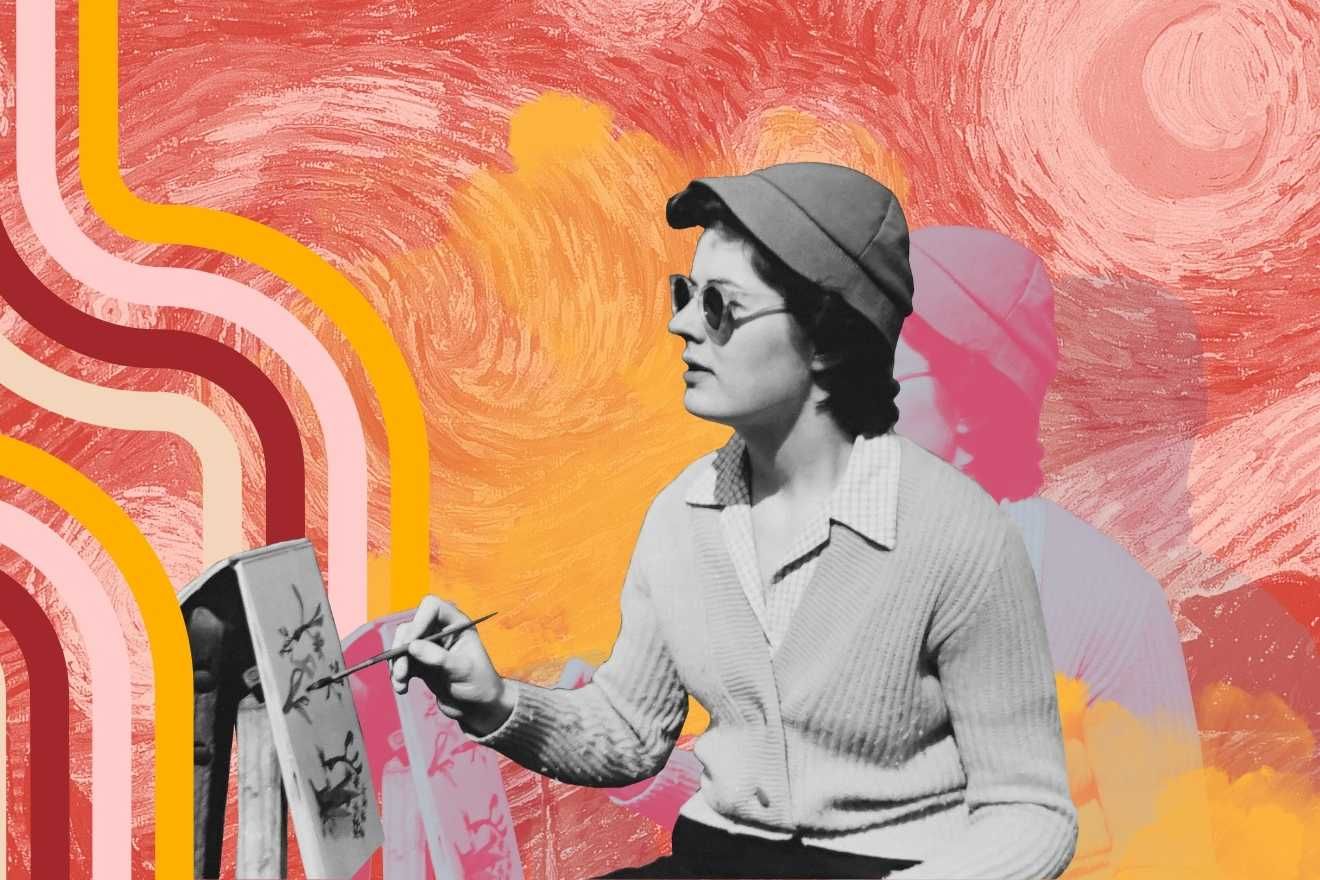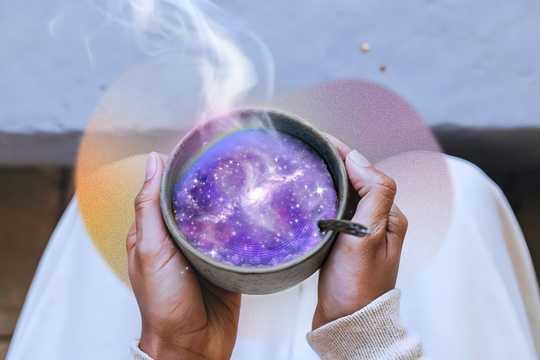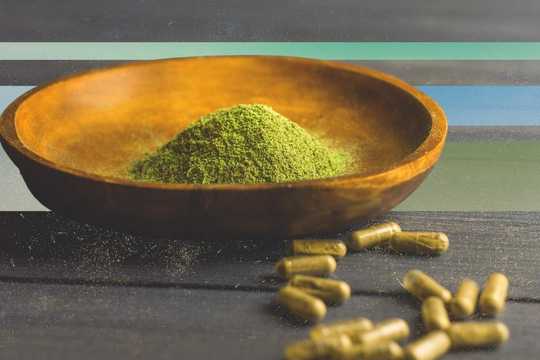People have long associated psychedelic experiences with profound spiritual insights, but the real challenge often comes after — the integration process. How do we take the mind-expanding moments of a journey and meaningfully incorporate them into our everyday lives?
One of the most powerful tools for this transformation is creative expression. From painting and music to journaling and movement, creativity can serve as a bridge between non-ordinary states of consciousness and lasting personal growth.
Creative expression allows individuals to process their experiences beyond words, tapping into subconscious layers of understanding. Whether you’re a provider guiding clients through integration or an explorer on your own psychedelic path, engaging in creative practices can help ground insights, heal trauma, and cultivate deeper self-awareness.
We spoke with Anne Gustafson, LMFT, PhD, about the connection between creativity, spiritual transformation, and psychedelic integration. She explored how artistic expression can serve as both a mirror and a map for the inner journey. In this article, she shares her insights on how different creative modalities support integration and discusses practical ways to incorporate these tools into the healing process.
Dr Anne Gustafson’s Background
Dr Gustafson is a private practice psychotherapist based in Olympia, Washington. She has a BA in Fine Art, an MA in Clinical Art Therapy, and a PhD in Depth Psychotherapy. She is a practitioner of Acceptance and Integration Training™ (AAIT) as well as psychedelic-assisted psychotherapy.
She has been practicing professionally since 1998 and is a licensed LMFT in Washington, Oregon, California, and Idaho. Before starting her private practice, she worked as a therapist, supervisor, director, and administrator in outpatient and inpatient mental health programs in urban, suburban, and rural settings.
When she is not working as a therapist, one can usually find her reading, tending to her family and household of various human and non-human beings, and creating pictures using various art media.
Psychedelic Integration: Synthesized Model of Integration
A 2022 paper published the first extensive review that analyzed the concept and practice of psychedelic integration. The authors concluded by proposing the Synthesized Model of Integration, which provides a comprehensive framework for understanding and structuring psychedelic integration.
The ultimate goal of the model is to create a well-rounded integration process that honors the depth of the psychedelic experience while supporting sustainable personal growth. At its core, the model highlights six interconnected dimensions of a person’s experience:
- Cognitive-emotional
- Somatic
- Spiritual-existential
- Connection to the natural world
- Relational-communal
- Lifestyle-action
These facets represent the key areas where psychedelic experiences can be processed and integrated into daily life. Surrounding these core dimensions, the model introduces six continuums that help guide integration practices and assess them as the following:
- Conscious or unconscious,
- Internally or externally focused
- Creative or receptive
- Passive or active
- Challenging or gentle
- Contemplative or expressive
By reflecting on where they naturally fall within these spectrums, individuals can select from a diverse set of integration practices that foster balance and holistic transformation. Rather than following a rigid set of rules, this model encourages journeyers to engage with various approaches that touch on all aspects of their being.
Creative-Receptive Continuum
The Creative-Receptive continuum describes how psychedelic experiences involve both receiving and generating meaning. During and after a journey, individuals absorb new insights, emotions, and understandings, but they also have the opportunity to actively create meaning, art, and connections. While this dynamic frequently plays a role in spiritual growth and relationships, it can also extend into other areas of life, shaping the integration process in diverse ways.
How Creative Practices Support Psychedelic Integration
We asked Dr Gustafson how creative practices can help integrate profound spiritual or mystical insights gained during a psychedelic journey. She explained that the insights we gain from psychedelic journeys are often not linear or rational in the sense we are used to and can seem as if they come from a completely different mind than the one with which we started the journey.
Dr Gustafson shared that we can go into a psychedelic journey expecting to get specific answers to specific questions. We may even have a “to-do list” of things we want to improve in our lives; these things may occur, but they may also not. She explained that the gifts of the journey might be much deeper, wider, and more profound than a narrow question leaves room for, and they can be much quieter than we might expect as we take them into our day-to-day lives. She talked about how different forms of creative expression can help carry on the insights of a psychedelic journey.
“[C]reative work such as drawing, painting, writing, dancing/movement, but also the creative work of cooking, initiating and holding conversations, caring for others, running a company, dreaming, really noticing others and one’s environment — these intentions and actions to create can continue the forward movement of the mind’s plasticity following a psychedelic journey, and can allow the seeds planted by the journey to grow.”
Dr Gustafson added that by allowing oneself to speak a language that might feel new (for instance, by trying to create an image of a thought or feeling), one can continue the co-creative and healing work that is the psychedelic experience.
Learn More About Creative Expression and Psychedelic Integration
- Explore Art Therapy and Psychedelics with Charmaine Husum, DKATI, RTC, CT
- Discover More About the Psychospiritual Integration of Non-Ordinary States of Consciousness
- Gain Knowledge About Psychedelic Integration Therapy: A Primer
- Delve into Demystifying Plant Medicine Integration
- Read Our 5 Tips to Navigate the Ups and Downs of Psychedelic Integration
Practical Creative Exercises To Integrate Psychedelic Experiences
There are many different creative rituals to explore when integrating a psychedelic experience.
Dr Gustafson recommends starting by using any techniques you may already be familiar with, but allow your usage to be playful at first. She emphasizes enjoying the sensual aspects of whatever art form draws you in.
If you feel overwhelmed by art materials, Dr Gustafson suggests signing up for an art class in basic techniques.
If you want to explore color but don’t want to deal with drawing, she suggests using a coloring book that speaks to you. There are many beautiful, detailed “adult coloring” books, such as ones with mandalas.
Dr Gustafson suggests collaging with magazine pictures if you don’t want to take on drawing or painting.
Structured Approaches (Guided and Intentional Practices)
There are different ways to approach creative expression in psychedelic integration. Structured approaches provide clear frameworks for integration, offering direction and intentionality. Some examples include the following:
Guided Art Therapy
Art therapy is a therapeutic approach that combines art and psychology to help individuals explore emotions, develop self-awareness, and process unresolved trauma or conflict. By engaging in the creative process, people can express thoughts and feelings that may be difficult to verbalize, making it a powerful tool for emotional healing and personal growth.
Beyond trauma work, art therapy also fosters social skills, self-confidence, and overall well-being, making it beneficial for individuals of all ages. According to the American Art Therapy Association, art therapy is an integrative mental health profession that enriches lives through active art-making, creative exploration, and psychological theory within a therapeutic setting.
No prior artistic skill is required — the focus is on expression, not artistic perfection. The process is open-ended, with no right or wrong way to engage, allowing each person to use creativity in a way that best supports their healing and self-discovery.
Some examples of guided art therapy techniques that can help you explore your psychedelic insights include the following:
- Symbolic Self-Portrait: Create an artistic representation of yourself before, during, and after your psychedelic journey. This technique will help you visualize transformation and personal growth.
- Journey Map: Draw a timeline or roadmap of key moments, emotions, and insights from your experience.
- Contained Expression: Use a specific shape (circle, square, or other form) to create art representing emotions or lessons, providing a sense of containment and safety.
- Non-Ordinary State Color Study: Reflect on the colors that stood out during your journey and paint or shade a piece that conveys the mood and energy of your experience.
Specific Writing Prompts
Using writing prompts provides us with direction on what to write about while integrating our experiences. Some examples of questions include:
- “What was the most powerful insight from my journey, and how does it relate to my daily life?”
- “If my psychedelic experience had a message, what would it say?”
- “What do I need to release or let go of after this journey?”
- “Describe a visual or sensation from my experience that felt significant. What might it symbolize?”
- “What aspects of my identity or life feel different after my experience?”
- “If I had to explain my journey to my past self, how would I describe it?”
- “What practices or actions can I take to integrate this experience into my relationships, work, or self-care?”
Other Structured Approaches
- Mandala Creation: Drawing or coloring symbolic mandalas helps organize psychedelic insights into a structured visual form.
- Collage or Vision Board: Gather images and words representing your experience to create a tangible, thematic reflection.
- Poetry or Spoken Word Reflection: Writing structured verses or spoken pieces to capture psychedelic insights.
- Guided Visualization or Storytelling: Mentally revisit the journey, narrate it as a story, and write it down to solidify the insights.
- Digital Art or Photography Exploration: Using digital tools like a drawing app or photo editing software to create symbolic representations of psychedelic insights and capture real-world elements that resonate with your experience.
- Sculpting with Clay or Natural Materials: Crafting a physical representation of an insight or feeling from the journey.
Free Form Methods (Intuitive and Exploratory Practices)
These exercises emphasize spontaneity and flow, allowing the subconscious to lead the integration process. Some examples include the following:
- Freeform Journaling: Writing continuously without editing to capture raw thoughts and emotions as they come.
- Stream-of-Consciousness Drawing or Painting: Letting the hand move freely across the page without planning.
- Movement and Dance Exploration: Expressing emotions and insights through improvised body movement.
- Sound and Music Expression: Playing an instrument without sheet music, chanting, or humming in an unstructured, intuitive way.
Structured Approaches Versus Free-Form Creative Expression
We asked Dr Gustafson which form of creative expression is more effective for psychedelic integration. She advises not to get too caught up in perfectly capturing a considerable insight, which can be like capturing butterflies and pinning them to a board. Dr Gustafson recommended the following:
“[With creative expression in psychedelic integration], allow what inspires you to remain alive by being unfinished. That being said, working very hard to create something that allows you to share your vision with others can be very gratifying work.”
She shares that doodling with lightness of intent has worked for her. She will revisit those doodles over time and layer over them (sometimes even years later).
Follow your Curiosity
Sign up to receive our free psychedelic courses, 45 page eBook, and special offers delivered to your inbox.Dr Gustafson’s Thoughts on the Evolving Role of Creativity in Psychedelic Therapy
We asked Dr Gustafson how she sees the role of creativity in psychedelic therapy evolving as psychedelics become more mainstream. She shared that in her work as a Jungian-influenced practitioner of a type of psychotherapy called Acceptance and Integration training, she tends to see things as polarities: seeking integration and reducing reactivity.
“I hope that the expansive creativity that psychedelics can give us access to remains in healthy balance with respect for traditions, especially those traditions that have been accessing altered states for millennia and have carefully constructed rituals and understandings of how to work with these different types of consciousness,” says Dr Gustafson.
She views creativity and growth as one half of the coin and structure and discipline as the other. We need both; it doesn’t have to be one or the other, but a harmonious relationship between these two parts of human life. Learning to use art materials helps you to play out this binary of structure or discipline vs creativity or expression.
Creative expression is more than just a tool for integration — it’s a gateway to deeper self-awareness, healing, and spiritual transformation. Whether through painting, writing, music, or movement, engaging with creativity allows us to process and embody the insights gained from psychedelic experiences in a way that words alone often cannot.
As psychedelic-assisted therapy continues to grow, clinicians and journeyers alike can benefit from incorporating artistic expression into the integration process. If you’re exploring psychedelics for personal growth or guiding others through their journeys, learning more about integration techniques can make a profound difference.
To ensure a safe and supportive experience, find a licensed provider in our leading vetted psychedelic therapy directory who can help you navigate this transformative path with intention and care.
References
American Art Therapy Association Staff. (2024, January 17). What is Art Therapy? Fact Sheet. American Art Therapy Association. https://arttherapy.org/what-is-art-therapy/.
Bathje, G. J., Majeski, E., & Kudowor, M. (2022). Psychedelic Integration: An Analysis of the Concept and its Practice. Frontiers in Psychology, 13. https://doi.org/10.3389/fpsyg.2022.824077.
MAPS Staff. (2025). Creative and Receptive Integration Practices. MAPS (Multidisciplinary Association for Psychedelic Studies). https://maps.org/integration/creative-and-receptive-integration-practices/.
Mead, E. (2020, March 25). Art Therapy for Kids: 15 Activities (PDF) & Ideas. PositivePsychology.com. https://positivepsychology.com/art-therapy/#5-art-therapy-exercises-and-techniques-for-adults.






